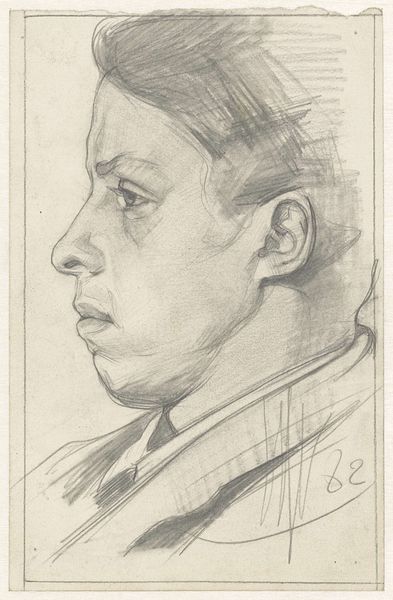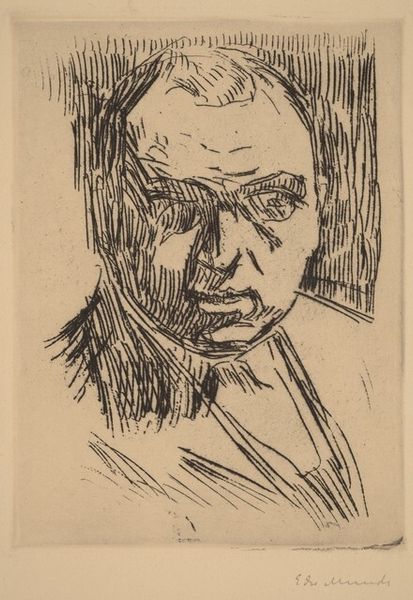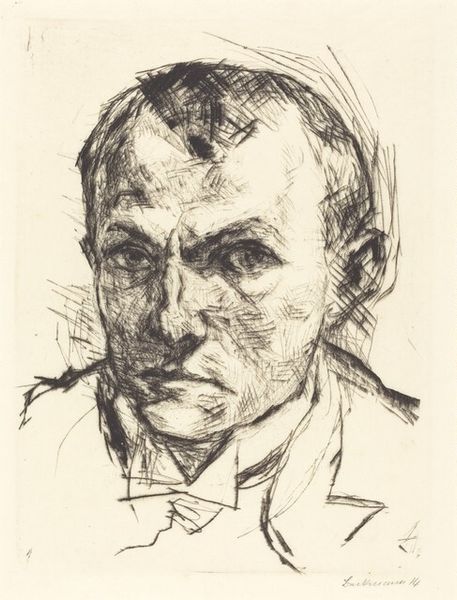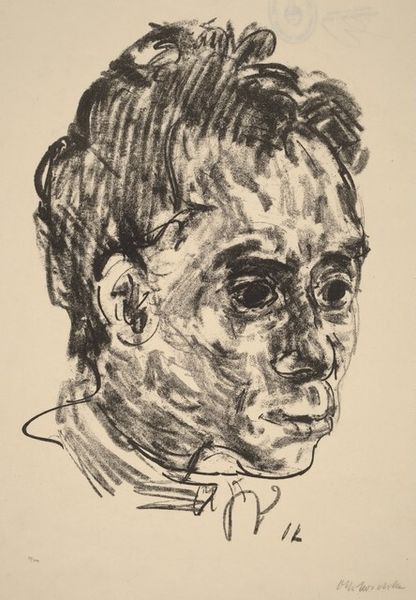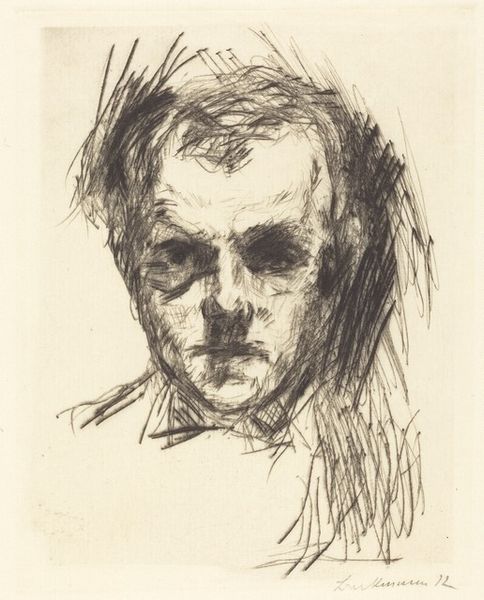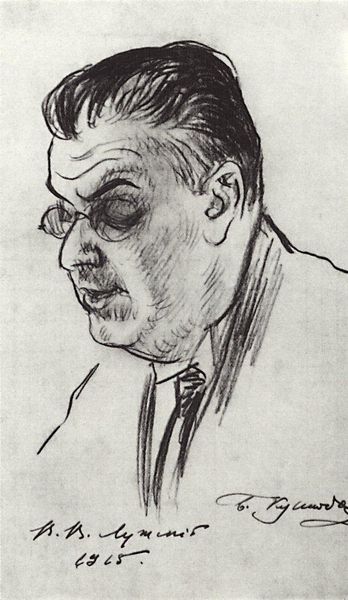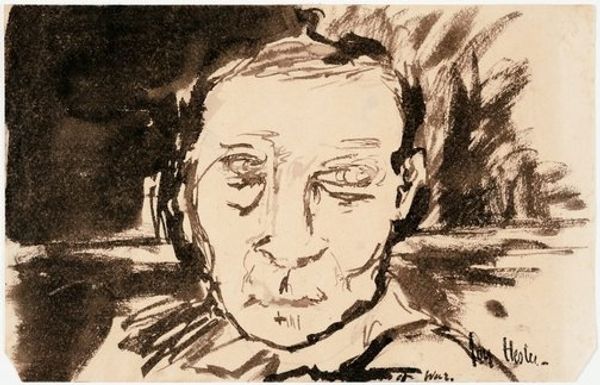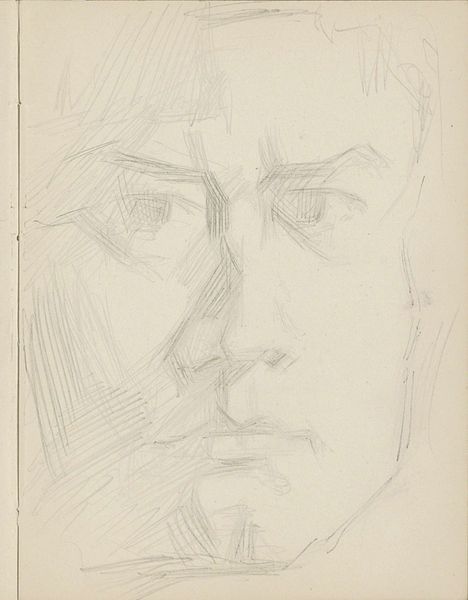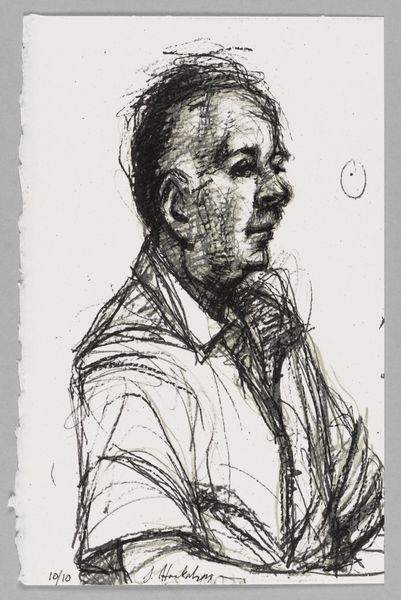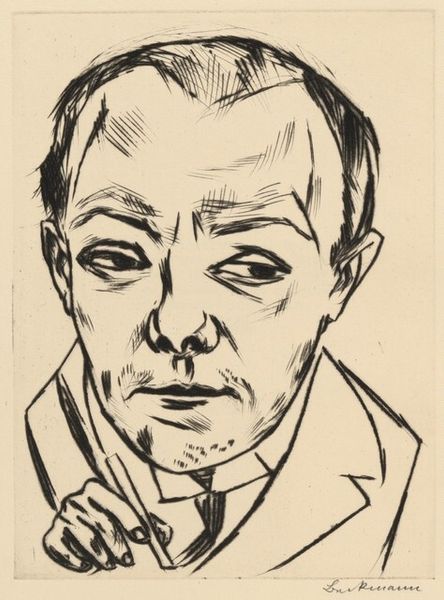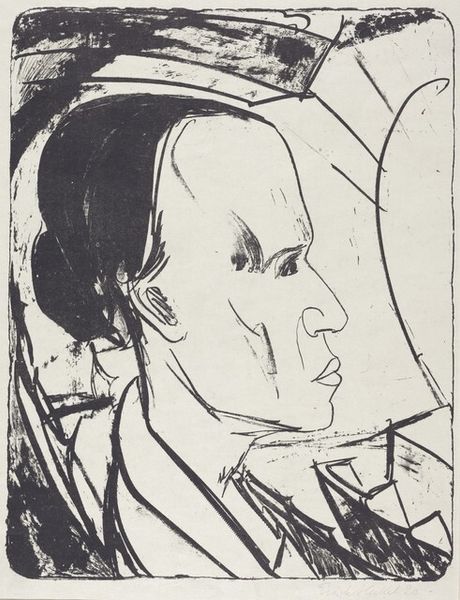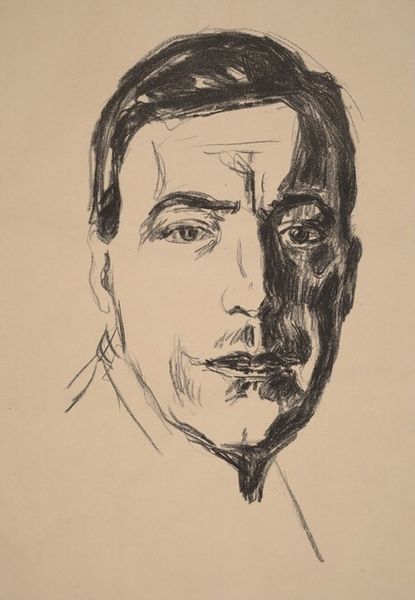
print, etching, ink, drypoint
#
portrait
#
ink drawing
#
self-portrait
# print
#
pen illustration
#
etching
#
caricature
#
caricature
#
ink
#
expressionism
#
drypoint
Dimensions: 9 1/8 x 7 1/2 in. (23.18 x 19.05 cm) (plate)
Copyright: No Copyright - United States
Curator: Let's turn our attention to Max Beckmann's stark "Self-Portrait" from 1919, housed here at the Minneapolis Institute of Art. He created this powerful image using etching and drypoint techniques, which are types of printmaking processes. Editor: Wow, immediately I get this raw, almost confrontational vibe. The lines are so bold and the gaze… intense. It’s like he’s daring you to look away. Curator: Precisely. As a print, think about the process; this wasn't a singular, spontaneous brushstroke but a deliberate, laborious method. Each line etched into the plate, each wipe of ink… a physical engagement. The materials themselves—metal, acid, ink—lend a weight and permanence. It reflects a specific social environment of Germany after World War I. Editor: Right, you can practically feel the weight of the world in those lines! The etching… it's almost sculptural, gives such texture. And I love that despite the grimness, there’s still something… humanizing? The cigarette dangling from his mouth gives him a devil-may-care attitude. Curator: The cigarette certainly injects an element of lived reality into the composition. Consider also that Beckmann was directly responding to his experiences serving as a medical orderly during the war, an experience that profoundly impacted his artistic vision. Editor: That makes sense! It definitely adds another layer of understanding to that penetrating stare. It feels less like arrogance, more like… survivor’s guilt perhaps? Articulating complex emotional landscapes on a physical copper plate… Amazing. Curator: The print medium made his work more accessible too. Think of these prints being reproduced and distributed. How might the dissemination of such images speak to post-war cultural production and social consciousness? Editor: I guess it's interesting, too, how even in a self-portrait—traditionally, you’d think so focused on the artist as an individual— the print medium inherently makes it a more collaborative or accessible enterprise? It breaks the kind of precious, auteur mystique. Curator: Exactly! We can't separate it from its production. What a profound act of self-revelation through a mechanical medium. Editor: What starts as this really visceral experience gets even more interesting when you dig into the process. I'll look at etchings differently from now on.
Comments
No comments
Be the first to comment and join the conversation on the ultimate creative platform.

